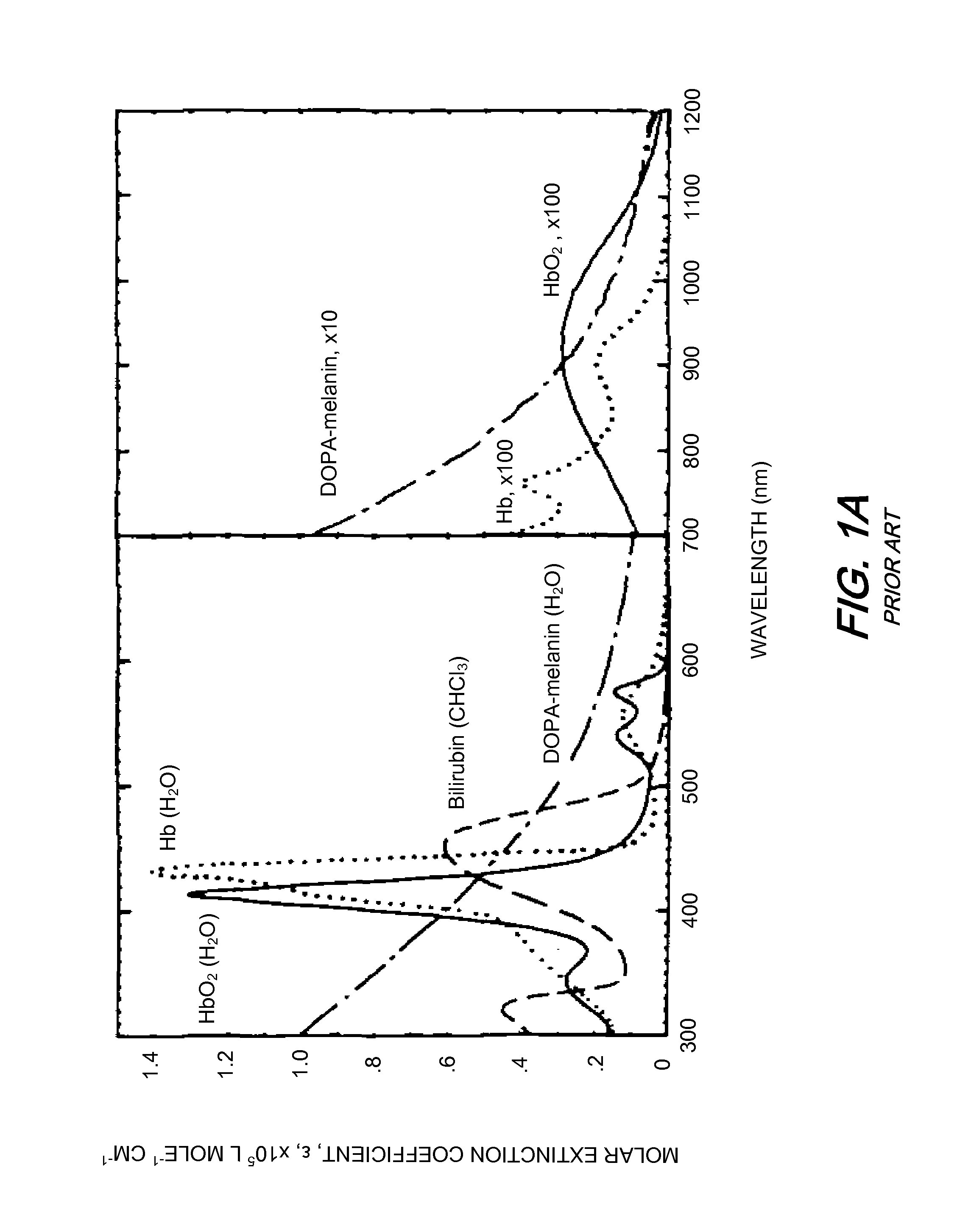Multi-spectral tissue imaging
a tissue imaging and multi-spectral technology, applied in the field of tissue imaging, can solve the problems of inability to resolve depth, near impossible to separate spectral information from rgb image, and compromise of accuracy, so as to improve detection, classification and understanding of tissue pathologies.
- Summary
- Abstract
- Description
- Claims
- Application Information
AI Technical Summary
Benefits of technology
Problems solved by technology
Method used
Image
Examples
Embodiment Construction
[0052]FIG. 2A schematically depicts an exemplary embodiment of a multi-spectral imaging system 200, in accordance with the present invention, for capturing images of tissue to be studied, such as skin. Illumination from one or more sources 210 is shone onto a subject's skin or a tissue sample 230 through a respective filtering element 215 and captured by a detector 220 through a filtering element 225. Each filtering element 215, 225 preferably comprises a plurality of filters, each of which can be selectively placed in the respective light path of the filtering element. (Note that the term “light” as used herein is not necessarily limited to humanly visible electromagnetic radiation, and may include portions of the electromagnetic spectrum above and below the visible range.) An exemplary embodiment of a filter wheel arrangement that may be used for filtering elements 215 and / or 225 is shown in greater detail in FIG. 2B, described below.
[0053]Preferably, the detector 220 comprises a ...
PUM
 Login to View More
Login to View More Abstract
Description
Claims
Application Information
 Login to View More
Login to View More - R&D
- Intellectual Property
- Life Sciences
- Materials
- Tech Scout
- Unparalleled Data Quality
- Higher Quality Content
- 60% Fewer Hallucinations
Browse by: Latest US Patents, China's latest patents, Technical Efficacy Thesaurus, Application Domain, Technology Topic, Popular Technical Reports.
© 2025 PatSnap. All rights reserved.Legal|Privacy policy|Modern Slavery Act Transparency Statement|Sitemap|About US| Contact US: help@patsnap.com



